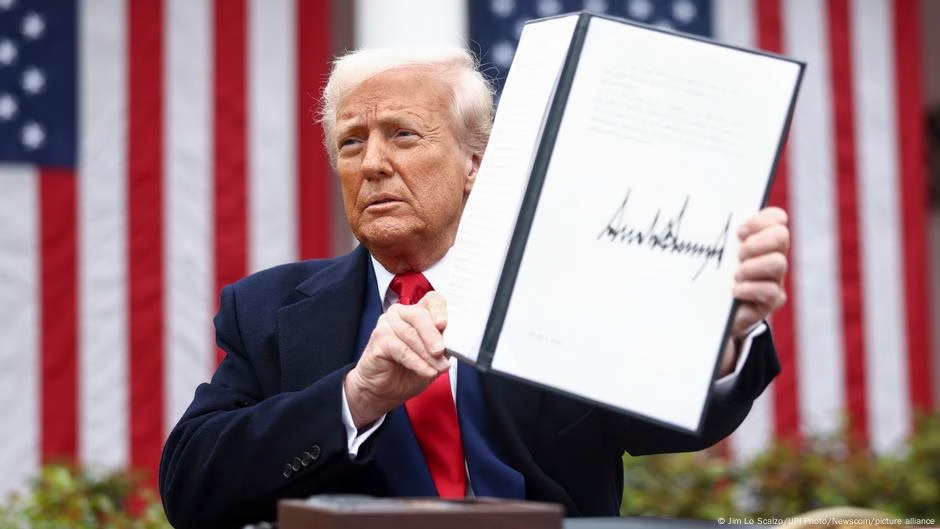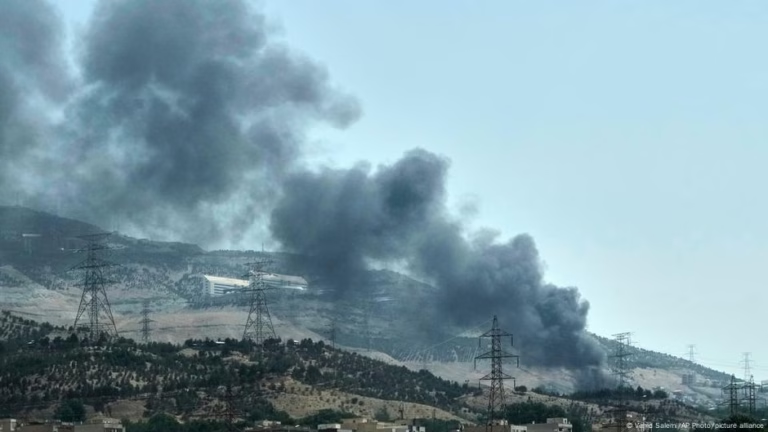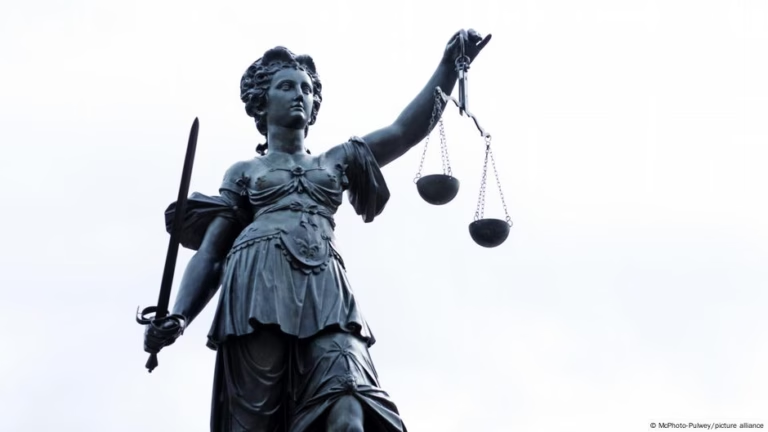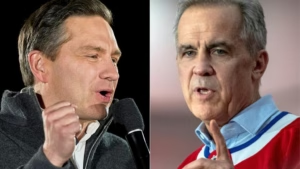The world closely observed US President Donald Trump when he issued his first 26 executive orders on January 20, his first day in office. By seeking to revoke birthright citizenship along with other anti-immigration orders, generally targeting diversity, equity and inclusion initiatives and specifically addressing the rights of transgender people, he set the tone for the first 100 days of his second term.
Executive orders empower presidents to exercise their political influence in implementing policies and laws. This implies that they must identify relevant existing laws or constitutional passages to serve as the legal basis for orders before they are issued.
DW examined the impact of Trump’s executive orders so far and whether the US legal system has managed to control his presidential powers.
What executive orders have been signed?
Data show that executive orders have remained a vital instrument for Trump since his inaugural day. Although Trump issued the largest number of executive orders on January 20, at least one executive order has been signed on nearly every other day since.
The more than 100 executive orders Trump has issued since his inauguration have reshaped the manner in which the United States is governed and altered the course of foreign and domestic US policy.
Trump’s policies mirror Project 2025
During his election campaign and post-victory, Trump and his associates distanced themselves verbally from Project 2025, a manifesto by the Washington-based Heritage Foundation think tank for ultraconservatively restructuring the United States. It advocates for erasing mentions of climate change from government records, accepting fewer refugees, and further restricting abortions.
James Goodwin, policy director at the Center for Progressive Reform, along with his colleagues, monitor the changes introduced by the Trump administration and how closely they align with the recommendations.
“A substantial plurality closely track specific recommendations in Project 2025,” Goodwin stated, mentioning orders on transgender rights as a particularly striking example. “In some cases, the language is almost lifted verbatim—or, in other cases, where the executive order itself accomplishes something that Project 2025 called for generally.”
Trump’s unparalleled utilization of executive orders
Trump has leaned more heavily on executive orders during the first 100 days of this presidency than during his previous term and significantly more than any president in the 21st century.
Trump’s use of executive orders not only stands out in terms of the sheer number issued but also because some orders appear to be based more on personal preference than policy priorities, noted political scientist Andrew Rudalevige, whose research focuses on presidential power and its relation to other government branches.
“Those orders driven by vengeance, targeting specific individuals or firms, indeed cross boundaries of how orders have historically been used,” Rudalevige argued. “Clearly, they don’t execute the law in any substantial sense but are instead employed as instruments of personalized power, representing a troubling development.”
Rudalevige emphasized that the issue extends beyond mere vengeance. “An executive order instructing the Department of Justice not to enforce the law strikes me as problematic. We’ve witnessed this with the order concerning the 14th Amendment and birthright citizenship, an attempt to impose a new citizenship definition on an already clear constitutional text.”
Can executive orders be halted or overturned?
All three branches of the US government possess the legal authority to challenge executive orders. Congress, as the legislative branch, can intervene as it passes the laws on which executive orders rely. Courts can intervene in cases where a president’s executive orders conflict with the Constitution or existing laws.
Future presidents can also revoke executive orders. Several of Trump’s orders have been issued to overturn those of Biden, and vice versa2. Biden has also overturned several executive orders from Trump’s first presidency.
“To achieve lasting policy change, legislation is a much more enduring approach,” Rudalevige said. “It’s interesting that the Trump administration has chosen not to pursue the legislative route in many cases, even with Republicans holding a majority in both chambers of Congress.”
Legal challenges to executive orders
More than a quarter (29%) of Trump’s 100 executive orders have faced legal challenges, some facing multiple challenges. At the time of writing, the vast majority of those cases remain pending.
Draft orders undergo a peer-review process within relevant agencies before being forwarded to the Department of Justice for assessment of form and legality, according to Rudalevige. “I suspect that in the current administration, they are not adhering to this institutionalized process that has been in place for nearly 90 years across various presidencies. It leaves us wondering what legal checks they are receiving. Presidents must use executive orders to enforce the law. In some cases, President Trump has utilized them to provoke lawsuits, issuing orders that appear to be at odds with existing statutes.”
“Part of it may be the public relations aspect. The president presents the order with a large signature, demonstrating strong leadership to his supporters. In an era when Congress struggles to act, presidents have been very tempted to do this. The question is: What’s the end result? Does the order get implemented? Or is it mainly for show? I believe we have a mix of both in the Trump administration.”
Source: https://www.dw.com/en/how-durable-are-donald-trump-s-executive-orders/a-72356211?maca=en-rss-en-all-1573-rdf







